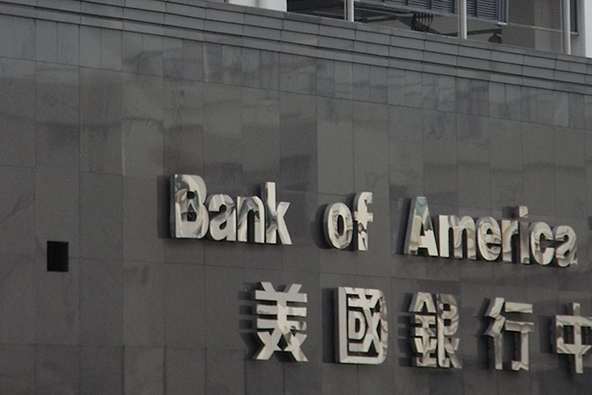Why M-Pesa Is Hugely Successful in Kenya and Less so Elsewhere

I don’t think anyone can accuse us of not paying much attention to M-Pesa any longer. However justified such criticism may have been, say, a couple of months ago (and I would dispute that it was), if anything, now one could criticize us for spending way too much time extoling the virtues of the hugely successful Kenyan mobile payments provider. And yet, here I am just about to do it once more.
The current exercise was prompted by a blog post by Wolfgang Fengler, the World Bank’s Lead Economist in Kenya, in which he gives us his take on the underlying reasons of M-Pesa’s spectacular take-off in the company’s home market. He also attempts to explain why this model has met with much less success elsewhere in the developing world. I think that Fengler hasn’t been nearly as successful in achieving the latter objective as he has been with the former. But let’s take a read of what he had to say and see what we can make of it.
How Mobile Money Was Created in Kenya
First, though, let’s briefly revisit M-Pesa’s early days to help us understand why and how the service came into being in the first place. The amazing thing about it is that in its current form M-Pesa is largely the creation of its users. But let’s start from the beginning.
So it is standard practice in Kenya for mobile phone users to be purchasing their airtime on a per-minute basis, rather than entering into monthly contracts. For example, you would purchase 30 minutes and when you use them up, you would have to buy more airtime. At some point several years ago, some users of Safaricom — a Kenyan mobile operator — realized that there was value in the airtime they purchased beyond its conversational utility. Instead of talk their way through the 30-minute credit, they could exchange it for a product or service by transferring it to another Safaricom user.
In effect, airtime became a medium of exchange, i.e. money. But in an underdeveloped country where only one in ten people have access to financial services, transferring airtime between users located at some distance between one another can be a much easier task than transferring Kenyan shillings and so the advantage of the mobile money is quite evident. Then the mobile operator’s executives realized that they could simplify the process further by removing the need to purchase airtime and Safaricom began issuing credits directly. And so M-Pesa was born.
Why M-Pesa Is Successful in Kenya and not Elsewhere
As Fengler points out, a third of all mobile money users in the world are Kenyans and they account for a half of all mobile money transactions. So why is M-Pesa so successful in Kenya and not nearly so in other countries? Fengler:
First, Kenya’s regulators enabled the mobile money take-off. The Central Bank in particular played a very progressive role and allowed “regulation to follow innovation”, while reassuring the market of its oversight. The regulator agreed that mobile money agents needed only limited requirements to enter the business, as they were not providing banking services, while the operator behaved as if it was regulated and periodically reported financial and usage data as Banks do.
Second, the strategy of the omnipresent operator – Safaricom – was also important. In 2007, the company already had more than 50 percent market share. Its strong position and national presence helped it to reach scale. But when replicating mobile money in other countries, such dominance by a single operator is not a precondition for mobile money to take off: many alternative models can also lead to success such as “third-party platforms” into which operators connect to. Even more important was the company’s business philosophy to “build a brand rather than make quick return”.…
Third, Safaricom’s management understood that the success of M-PESA was ultimately about people management, not technology. Many innovations fail because management focuses exclusively on designing and launching a product, and assume that technology will take care of itself afterwards. The opposite is true. You need people to run machines and the interactions you get after product launch can generate even better products. The true secret of M-PESA’s success is the management of the agent network, which grew from 300 initially to almost 30,000 today.
Fengler is not the first expert to point to the favorable regulatory environment in Kenya as a factor in M-Pesa’s success and I think it is by far the most important one.
The Takeaway
I think Fengler’s analysis of M-Pesa’s more modest achievements in other countries misses an important factor: not everywhere is the service as needed as it is in Kenya. While only ten percent of Kenyans have access to financial services, the equivalent share is 48 percent in India and 46 percent in South Africa, two other markets where M-Pesa operates. So there is less repressed demand in these two countries. In fairness, Fengler does acknowledge the importance of the availability of banking services to the future success of mobile money, at the conclusion of his article:
There is no doubt that mobile money will soon go global, especially if countries consider the lessons from Kenya. In the whole world, there are still more than two billion people who have cell-phones but no Bank account: for these, mobile money is an extremely attractive proposition.
A good portion of these two billion unbanked but cell-phoned consumers live in India whose financial sector is much more heavily regulated than Kenya’s, which could prove an obstacle in the path of mobile money adoption. Yet, Fengler tells us that India is beginning to catch up with Kenya, so I would be watching closely the developments there.
Image credit: Asmarterplanet.com.


